We sell plenty of McPherson wine, so we were thrilled to find this article. Come on in to Salado Wine Seller for McPherson wine!
McPherson winery will add new dimension to downtown Lubbock
By Chris Van Wagenen | A-J BUSINESS EDITOR | http://www.lubbockonline.com/stories/080308/bus_312968032.shtml
Sunday, August 03, 2008
Story last updated at 8/3/2008 – 2:36 am
When the electric saws aren’t grinding and cement isn’t being poured, you’ll find Kim McPherson taking delivery of another piece of used equipment from California’s Napa Valley or just fretting over the amount of dust that’s covered his stainless steel bottling line.
It’s here in the former Coca Cola bottling facility where grapes will be crushed, fermented, bottled and yes, tasted. It’s tough work for a winemaker, whose family legacy still influences a statewide industry today.
For nearly a year now, McPherson, his staff and contractors have been tearing apart the former bottling plant and replacing it with a full-scale winery on a half-block area off Texas Avenue between 16th and 17th streets in the Depot Entertainment District.
Late this summer or early this fall, McPherson will uncork his downtown winery, which some believe could lead to further redevelopment of the area.
Beyond the crushing, winemaking, bottling and sales, McPherson Cellars will offer its visitors a tasting room, waterfall-filled courtyard, an events center and a chapel that will wed his wines to the perfect couple.
It’s a grand vision, but one that has made it from blueprint to the proving ground.
“It’s not like I’ve never built something like this,” said the former Caprock Winery winemaker, whose talent was on loan for 16 years. “This is something I’m doing on my own and I think it will be incredible.”
McPherson said he knew four or five years ago Caprock was getting a little too big for what he wanted to do.
“I wanted a place where I could produce about 7,000 to 8,000 cases. I also knew I didn’t want to do it far from Lubbock and out in the county.”
While McPherson fancies his days at Caprock, he said he wants to make wines that capture the imagination of the connoisseur.
“I wanted to be in the city and I wanted to be downtown. When the laws changed to allow that, I knew where I wanted to be, and when this building came up, I knew it was it. It was an incredible location,” he said.
The winery will open directly across the street from LaDiosa Cellars, a smaller wine venue opened by McPherson’s wife, Sylvia.
“That was just a coincidence,” he said.
Rob Allison, assistant city manager for development services, said McPherson’s vision plays right into what the Downtown Redevelopment Commission is attempting to accomplish.
“For this (redevelopment) to be a success, you need private enterprise. This is an example of that. I think what Kim is doing is creating an ambiance that fits the downtown culture and especially the Depot Entertainment District,” he said.
The injection of private money and the creation of an unusual venue is bound to draw masses to the area.
“This is the way you jump start downtown,” Allison said.
For McPherson, his winery isn’t about just making great wines or creating perfect celebrations – it’s moreso about his family and father, in particular, who was involved in the state’s winemaking industry for more than 40 years.
Clinton “Doc” McPherson, a chemistry professor at Texas Tech and founder of Llano Estacado Winery, gave him the dream, he said.
Both he and his father were inducted into the Who’s Who in Food and Wine Texas Hall of Fame in 1999.
Kim McPherson, a graduate of Texas Tech and University of California at Davis, has won 400 medals in state, national and international wine competitions, including two double golds at the prestigious San Francisco Wine Fair – not far from the heart of the Napa Valley.
“I’m doing this in honor of my dad and Bob Reed (another Tech professor with a vision of wine on the South Plains),” he said.
McPherson said what few people know or understand is the grape-growing ability of the South Plains, whose varietals are sought by smaller wineries across the state.
He intends to produce two types of wines – first and foremost his flagship – a red Sangiovese that can be traced to Tuscany, Italy, and whose grapes were introduced by Italian immigrants in the U.S. in the late 1800s. McPherson characterizes it as a classic grape.
The second type of wine will be blends on the inexpensive side, costing in the $9 to $12 range.
McPherson’s journey hasn’t been an easy one.
He took over a building that boasted great history, but was beaten down, including a wall full of years of pigeon droppings and a soppy roof.
Coincidentally, the former Coke bottling plant was owned by Pat McNamara, whose family operated The Coke Bottling Co. of Lubbock Inc..
Today, McNamara serves as president of Glazer Distributing Inc.’s Texas operation, which also distributes McPherson’s wines.
“(McNamara) told me he remembered watching them bottle (Coke) all of the time while he was here,” McPherson said.
The winemaker will tell you all the hard work has been well worth it.
“I look at other places, but to be here in the Depot District? Just icing on the cake. I can finally do what I’ve always wanted to do. I can bottle my own wine. Where else would I be? This is where the best grapes are grown. … I’m very excited about all this,” he said.
To comment on this story:
chris.vanwagenen@lubbockonline.com 766-8744
james.gallagher@lubbockonline.com 766-8706
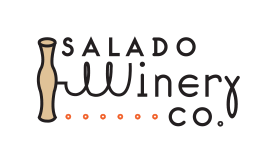
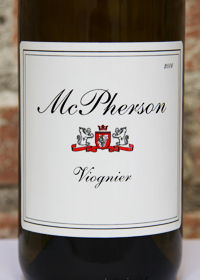
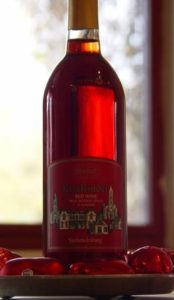
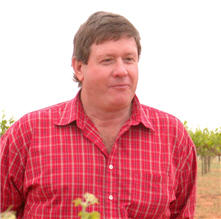 Neal Newsom heads Newsom Vineyards and the Texas Wine and Grape Growers Association.
Neal Newsom heads Newsom Vineyards and the Texas Wine and Grape Growers Association.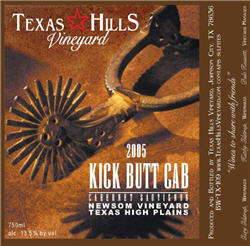 NN: The next year we planted two more acres and we would just keep planting a couple of acres each year. When we got up to 18 acres, we had to stop because we were running up against a wall trying
NN: The next year we planted two more acres and we would just keep planting a couple of acres each year. When we got up to 18 acres, we had to stop because we were running up against a wall trying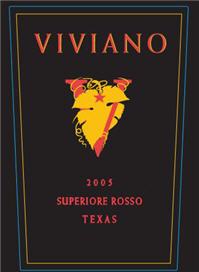 NN: OK. Here’s a few off the top of my head.
NN: OK. Here’s a few off the top of my head. 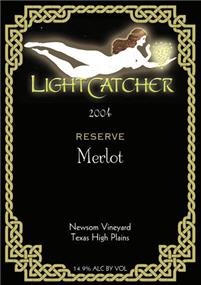 doing well, too. Dolcetto is a dry wine, but the High Plains version has the sweetest fruit. In the whites, Viognier, Pinot Grigio and Vermentino are working real well. I’m also hearing that Marsanne and Roussanne are doing well, but I haven’t tried any yet.
doing well, too. Dolcetto is a dry wine, but the High Plains version has the sweetest fruit. In the whites, Viognier, Pinot Grigio and Vermentino are working real well. I’m also hearing that Marsanne and Roussanne are doing well, but I haven’t tried any yet.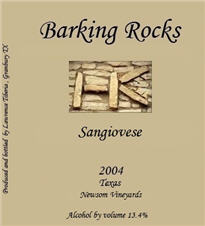 business. I refuse to use illegal immigrants, but if the program isn’t friendly, that’s all that will be available, and for me, since I won’t use illegals, then me and a lot of other farmers will be in trouble.
business. I refuse to use illegal immigrants, but if the program isn’t friendly, that’s all that will be available, and for me, since I won’t use illegals, then me and a lot of other farmers will be in trouble.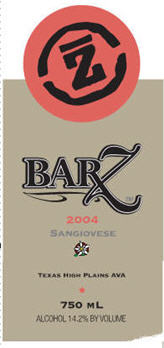
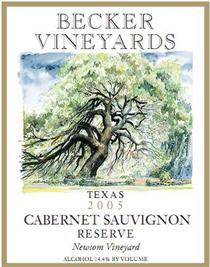 Gary Gilstrap was a pharmacist and he is an activist winemaker, comfortable with micro-oxygenation, barrel alternatives and anything else he needs to use to make the best wine he can. His 2005 Texas Hills Kick Butt Cab has tongue tickling acidity with sarsaparilla and cola on the nose. His version has very soft tannins and is ready to drink right now. Many consumers would pick Becker Vineyards as the best winery in the state, and while there are several other wineries that could just as easily take that title, there’s no arguing with the consistent excellence of winemaker Russell Smith’s skill. The Becker Cab Reserve has gorgeous color, big fruit that’s perfect balanced with the acids and a long finish of sweet fruit and leather. The wine has the elegance of Bordeaux with a dollop of California fruitiness. If it said Napa on the label it would cost $125. Another winery frequently mentioned at or near the top is Llano Estacado. Winemaker Greg Bruni spent his youth in California making wine all over the state. He has been at Llano for 15 years, learning the specifics of working with Texas fruit. A few years ago, he decided to create a tête de cuvée. It’s called Viviano and it is consistently one of the best red wines in Texas. Greg’s tastes run more to the Old World than the New, and he’s aiming at a super Tuscan style, blending Newsom’s Cabernet and Sangiovese. The 2005 is a gorgeous deep color with plum and red berry aromas and plenty of grip. It’s still a baby. This ideal wine for a grilled steak.
Gary Gilstrap was a pharmacist and he is an activist winemaker, comfortable with micro-oxygenation, barrel alternatives and anything else he needs to use to make the best wine he can. His 2005 Texas Hills Kick Butt Cab has tongue tickling acidity with sarsaparilla and cola on the nose. His version has very soft tannins and is ready to drink right now. Many consumers would pick Becker Vineyards as the best winery in the state, and while there are several other wineries that could just as easily take that title, there’s no arguing with the consistent excellence of winemaker Russell Smith’s skill. The Becker Cab Reserve has gorgeous color, big fruit that’s perfect balanced with the acids and a long finish of sweet fruit and leather. The wine has the elegance of Bordeaux with a dollop of California fruitiness. If it said Napa on the label it would cost $125. Another winery frequently mentioned at or near the top is Llano Estacado. Winemaker Greg Bruni spent his youth in California making wine all over the state. He has been at Llano for 15 years, learning the specifics of working with Texas fruit. A few years ago, he decided to create a tête de cuvée. It’s called Viviano and it is consistently one of the best red wines in Texas. Greg’s tastes run more to the Old World than the New, and he’s aiming at a super Tuscan style, blending Newsom’s Cabernet and Sangiovese. The 2005 is a gorgeous deep color with plum and red berry aromas and plenty of grip. It’s still a baby. This ideal wine for a grilled steak.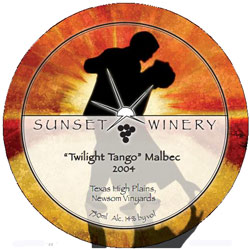 heat you might expect. The nose has a lovely perfume with just a touch of cola, caramel and black pepper. The mouthfeel is velvety but has good grip, sweet fruits and a l-o-n-g finish. I couldn’t detect the alcohol at all.
heat you might expect. The nose has a lovely perfume with just a touch of cola, caramel and black pepper. The mouthfeel is velvety but has good grip, sweet fruits and a l-o-n-g finish. I couldn’t detect the alcohol at all.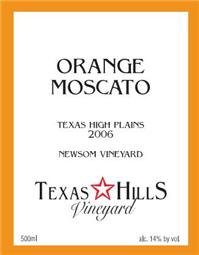 tos by Wes Marshall
tos by Wes Marshall READER FEEDBACK: To post your comments on this story,
READER FEEDBACK: To post your comments on this story,